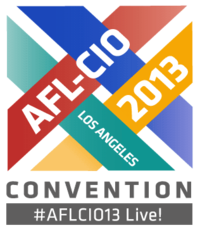This week witnesses thousands of trade unionists and labor activists assembling in Los Angeles for the 27th Constitutional Convention of the AFL-CIO. With union membership continuing to decline, the federation has been seeking new approaches to advocate for American workers.
The labor movement’s reach peaked in the early 1950s, when some one-third of US workers belonged to a trade union. This pinnacle was achieved under labor relations system created by the Wagner Act in 1935: workers voted in government-supervised election campaigns to decide whether they wanted collective bargaining and if so, which union would represent them. Labor and management would then negotiate a contract; the workers, now union members, would enjoy improved wages and benefits and pay dues to support their union in return.
In recent decades this system has broken down. Employers now campaign aggressively to discourage their employees from voting for union representation, often going beyond legal bounds (labor board investigators find this thousands of workers each year suffer such unlawful retaliation). Under these conditions unions have not succeeded in organizing enough workers in the new service sector and technology jobs to offset declines in traditional union strongholds like manufacturing.
One of the more promising ideas broached at this convention is an exploration of “alt-labor,” that is, forms of worker representation that don’t fit in the traditional union/collective bargaining mold. Perhaps best known are the “worker centers” found in many cities, often affiliated with Interfaith Worker Justice. These walk-in centers perform admirable work helping workers who lack union membership to seek justice when they have been cheated of wages or hurt on the job; many focus especially on the needs of immigrant workers. Other experiments are modeled after professional associations or advocacy groups. AFL-CIO President Rich Trumka hopes that the nation’s established labor unions can help these organizations establish new, durable forms of worker action suitable to today’s conditions.
One might argue that the original “alt-labor” movement was the Congress of Industrial Organizations (The CIO in AFL-CIO). Back in the 1930s the auto and steel and industries seemed invulnerable to traditional organizing techniques. The nation’s largest and most powerful union of the day, the United Mineworkers, stepped up to shelter and finance the small industrial organizing committees that had appeared in those industries. Within a few years the United Auto Workers (UAW) and United Steelworkers (USW) grew into some of the mightiest labor unions America had ever seen.
But they did so by establishing conventional collective bargaining arrangements: negotiating contracts and collecting dues. “Alt-labor” eschews that route. The worker centers serve hundreds or thousands of workers, not hundreds of thousands or millions like traditional trade unions. They do their good work supported not by dues but by grants and charitable donations (including from the Catholic Campaign for Human Development). No one, yet, seems to have figured out how to make alternative models of worker representation financially self-supporting for a significant length of time, nor sufficiently scalable to suggest a real alternative to the labor unions we know today. Until someone does, the unions with which we are familiar – with all their faults – are really all that America’s workers have.








